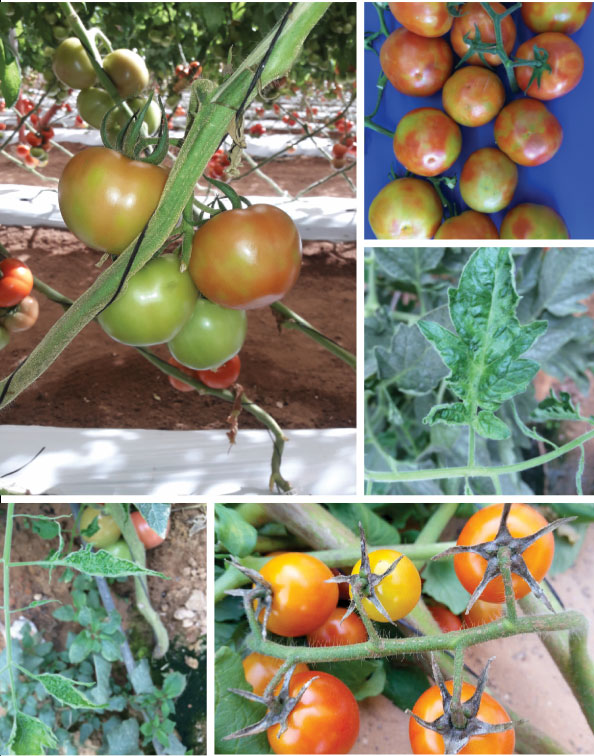2/1/2020
Greenhouse Disease Update: Tomato Brown Rugose Fruit Virus
Bill Calkins

“This is a current problem and we need to be aware,” according to Dr. Jill Calabro, Science and Research Programs Director at AmericanHort. She’s referring to Tomato Brown Rugose Fruit Virus (ToBRFV), which was first identified in a southern California greenhouse in 2018 and has also been found in Mexico, Florida and Ontario.
The virus has been eradicated in the U.S., according to Jill. “It was established in a California greenhouse, but was successfully cleared. It was detected on tomato fruit in Florida, but has not yet been established.”
Pictured: ToBRFV is visually detected via ruffled leaves and lesions on fruit within two weeks of infection. These images offer a guideline for diagnosis. If you feel your crop is infected, destroy affected plants and contact a specialist immediately.
This virus primarily impacts greenhouse tomato production and can spread to peppers, nightshades and some solanaceous ornamental crops, but the impact beyond tomatoes and peppers hasn’t been well studied.
GrowerTalks caught up with Jill to get an update on the disease and felt it was important to pass the information on to North American greenhouse professionals, especially considering current diversification with many growers getting into controlled environment production of vegetables like tomatoes and peppers.
ToBRFV is a disease that can be transmitted through seed and plants, according to Jill. “It can be transmitted easily through grocery produce and then to consumers if they save the seed. In the seed, it is much harder to detect,” she says.
There isn’t a food safety impact, but tomatoes produced in greenhouses can carry the virus and infected fruit will be unsaleable. In a greenhouse, the virus is spread by physical contact, such as by workers, tools and propagation.
Symptoms of the disease can be easy to detect. Rugose is defined as “ruffled; corrugated” and can be seen with the naked eye when examining foliage. Tomato fruit develop lesions within 12 to 18 days of infection and are often deformed and mature irregularly, Jill says.
The USDA has certainly acted on ToBRFV, employing a federal order and now requiring certification of tomato seed and seedlings imported from Mexico, Canada, the Netherlands and Israel. The U.S., Mexico and Canada are currently working together to minimize the spread. Inputs from these countries must carry certification paperwork as of November 2019.
According to Jill, growers should be sure to buy from reputable sources that test seed for ToBRFV. Watch for more updates on ToBRFV from AmericanHort, who will be following this closely. GT